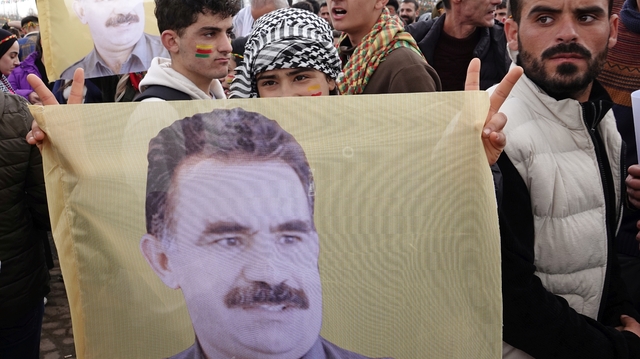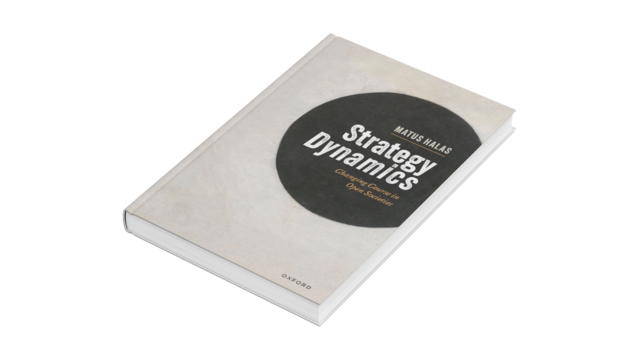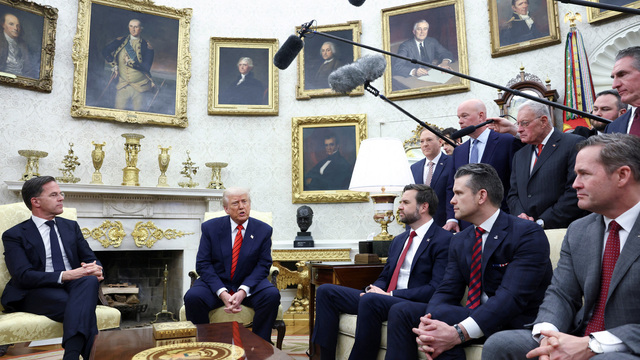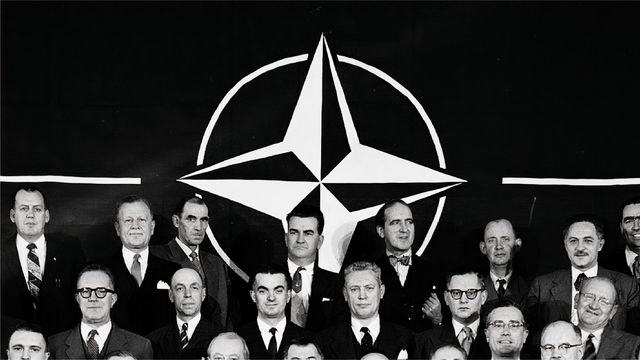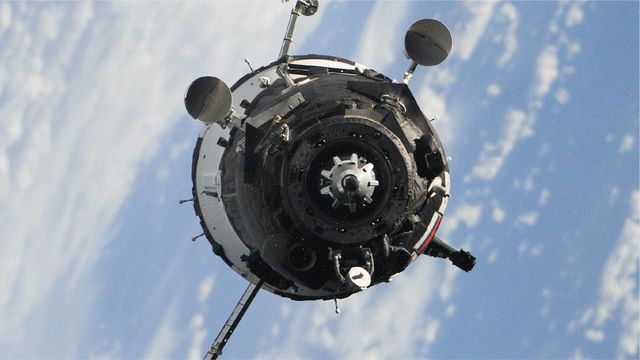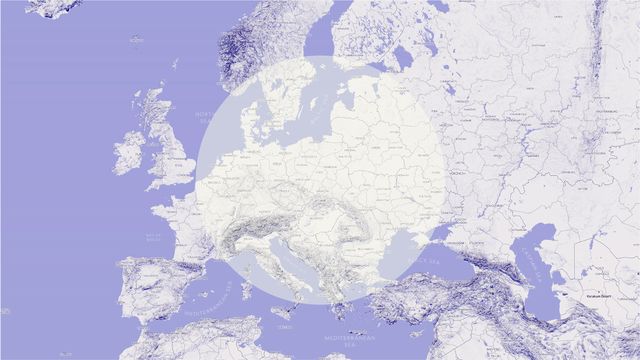Collective Defence in the Age of Hybrid Warfare
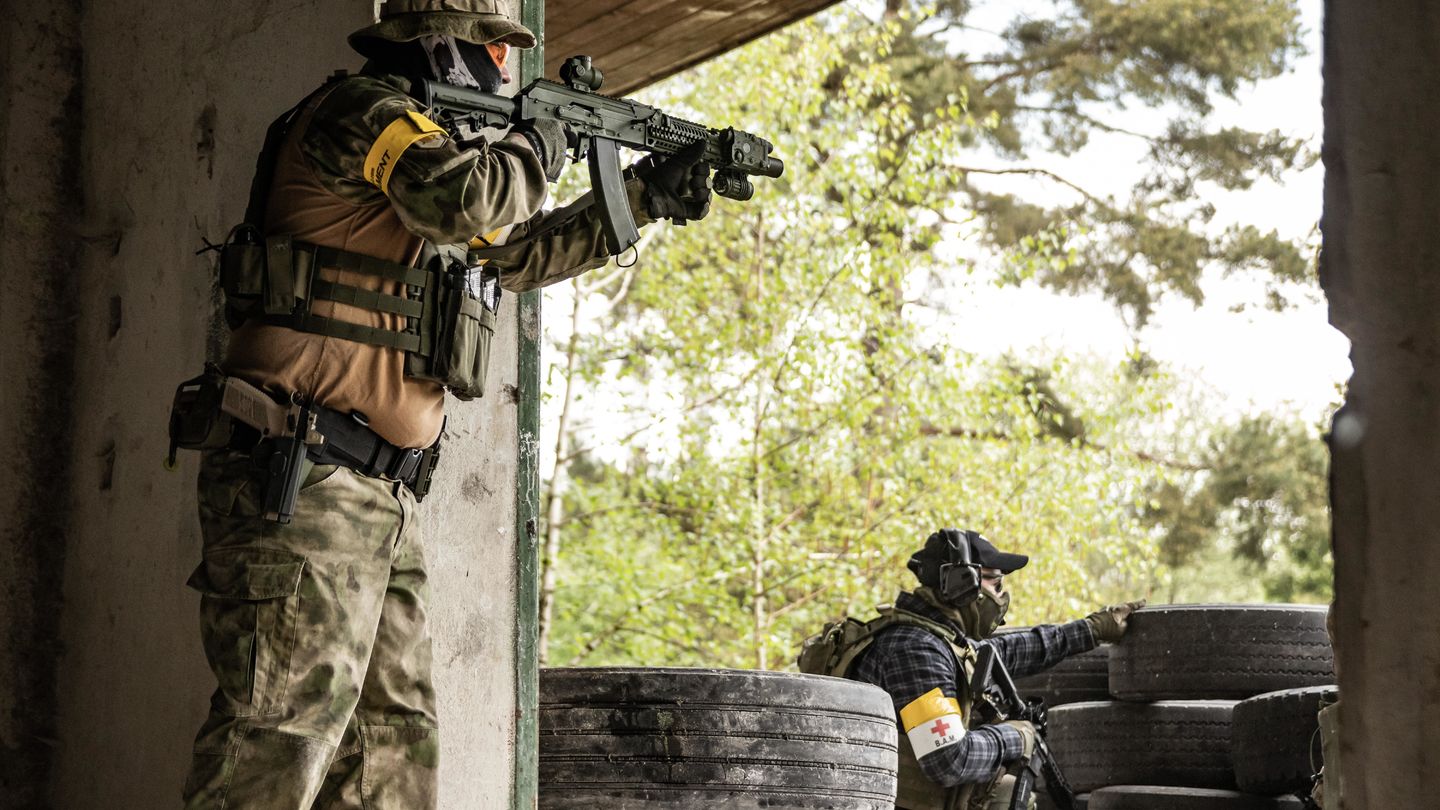
paper
The discussion paper by Benjamin Tallis and Michal Šimečka, senior researchers at the Institute of International Relations, provides a (critical) reflection on hybrid warfare – as both a concept and a practice – in the context of collective security in Europe, and discusses the role of the institutions and policies of NATO, the EU, and Member States.
1. Introduction: The rise of Hybrid Warfare
Over the past two and half years, ‘hybrid warfare’ has turned from an academic fad into an article of conventional wisdom. Russia’s March 2014 annexation of Crimea and aggression in the Donbas – and, even more importantly, the lessons collectively inferred from the conflict by US and European policy-makers – has fashioned a new lens through which security in Europe, particularly the Eastern flank of NATO, came to be imagined and pursued. This is despite the lack of either an agreed-upon definition or a consensus on the manifestations of hybrid warfare.This discussion paper provides a (critical) reflection on hybrid warfare – as both a concept and a practice – in the context of collective security in Europe, and discusses the role of the institutions and policies of NATO, the EU, and Member States. This introductory section presents an overview of the state of play. It outlines the core challenges of hybrid warfare for collective defence in the post-2014 context, especially regarding the Eastern flank of NATO, as well as the strategic assumptions that underlie them.
Contemporary accounts of hybrid warfare – conventionally understood as purposive and integrated use of regular and irregular, overt and covert, military, paramilitary and civilian means of coercion by a state or non-state actor against a target state, under the shadow of plausible deniability – are extrapolated from Russia’s annexation of Crimea and manipulation of civil unrest and conflict in eastern Ukraine. The Ukraine campaign became interpreted as emblematic of a wider shift in Russian military strategy, foretold in so-called ‘Gerasimov doctrine’. Gerasimov’s oft-cited 2013 piece built on the Russian narrative of ‘coloured revolutions’ in Ukraine and Georgia and Arab spring revolts as having been manufactured by Western instruments of hybrid warfare, to proclaim the growing importance of non-military instruments in 21st century conflicts. This way, of course, Gerasimov also sought to militate against the military imbalance between Russia and NATO in Europe.
However, the Russian General Staff’s embrace of hybrid warfare was far from a pioneering intellectual breakthrough. By 2014, the concept and practice had already been entrenched in US military thinking, most prominently in the wake of the 2006 war in Lebanon. Defence secretary Robert Gates invoked the notion of hybrid warfare, in the context of counter-insurgency and proxy wars in the Middle East, as early as 2009.Even earlier, several academic treatments of hybrid warfare – and related concepts – were put forward by leading military scholars, most authoritatively by Frank Hoffman in the early 2000s. These were mostly designed to illuminate US counter-terrorism and counter-insurgency strategies, while recognizing that hybridity in conflict is as old as warfare itself. For its part, the Alliance had also engaged in strategic reflection on hybrid threats long before the Ukraine campaign. In 2010, NATO began articulating its own comprehensive approach, as part of the work on ‘NATO’s Military Contribution to Countering Hybrid Threats’, feeding into the 2010 Strategic Concept.
1.1. Dillemas of collective defence after Ukraine
But it was not until 2014 that these intellectual (and a few real) exercises came have real bearning on core dilemmas of collective and territorial defence in Europe. Given the scale and apparent strategic coherence of undeclared hybrid war used by Russia in Ukraine, it suddenly acquired a status of a war-winning formula. While it was acknowledged that Crimea and eastern Ukraine made for an exceptionally fertile terrain for hybrid warfare – owing to existing Russian military installations and stationed soldiers, divided loyalties of significant parts of the local population, or weak state structures penetrated by Russian intelligence – the conflict nonetheless became construed a template of how potential aggression against a NATO Member State, most likely Poland or one of the Baltic states, might be waged.
The hitherto theoretical and diffused concept turned into a very concrete and localized threat scenario. This rested on the assumption that Russia is willing and able to employ similar tactics along the Eastern Flank of NATO, to achieve the grand ‘objective’ of a ‘politically restructured Europe’, as NATO Parliamentary Assembly’s 2015 Report put it. The belief that ‘Narva could be next’ was further reinforced by past record of Russian cyber warfare and attempts to stir civil unrest, as well as more recent incidents, such as the capture of Estonian intelligence officer Eston Kohver in September 2014, the spike in airspace violations, snap military exercises, or rhetoric aimed to de-legitimize the independence and sovereignty of Estonia, Latvia and Lithuania – all against the background of continued covert activities, propaganda in the Russian media space, and provision of money to pro-Russian political and cultural groups.
It soon became evident that the principal vulnerability of the Alliance to possible hybrid aggression lies in the way Article V is constructed. The ‘hybrid’ qualities of ambiguity and deniability – which, it is feared, would be manipulated by Russia to come close to the Article 5 threshold but never reaching it – can paralyze the institutional and political mechanisms of collective defence. The absence of a common definition of hybrid aggression would make every such deliberation in the North Atlantic Council heavily politicized, lengthy and arbitrary. But even a sharper and more formalized specification of an automatic trigger of collective response – for instance, clearly attributable ‘infiltration of foreign forces on sovereign territory’ to account for ‘little green men’, as suggested by former NATO SACEUR Phillip Breedlove suggested – would not necessarily solve the problem. After all, the clearer the threshold, the easier it becomes for Russia (or any other potential aggressor) to tailor its action to come close but stay below it. Mindful of these gaps in Article V – which could be exploited by hybrid aggressors but which have no obvious remedies – NATO leaders in Warsaw assigned primary responsibility for protection against hybrid threats to individual Member States. Yet the final Communique also asserted that ‘the Alliance and Allies will be prepared to counter hybrid warfare as part of collective defence; and ‘the Council could decide to invoke Article V’.
1.2. The conventional side of hybridity
Aside from the rigidity of the Washington Treaty, the lessons of Ukraine have exposed additional vulnerabilities arising from Russia’s application of hybrid warfare. It drove home the importance – glossed over in earlier accounts of hybrid warfare as a defensive weapon of choice of insurgents, guerrilla fighters and other structurally weak actors – of the conventional military component, working in synergy with sabotage by unmarked special forces, economic and trade coercion, propaganda, and cyber warfare. Indeed, active involvement of regular Russian units and equipment in the Donbas theatre, combined with a credible threat of largescale invasion, proved integral to the ‘hybrid’ campaign. The conventional military aspect of hybrid aggression appears just as plausible in the Baltic theatre, given NATO’s lack of strategic depth along the Eastern flank (irrespective of the implementation of the Readiness Action Plan or decisions on forward presence agreed upon at the Warsaw summit), coupled with Russia’s superior military presence (300 000 troops stationed on Russia’s north-western border, and capacity to mobilize 70 000 troops in a matter of days) and build-up of A2/AD capabilities to thwarts NATO reinforcement and close off the Suwalki Gap. As Lanoszka observed, covert and incremental destabilization, conducted under threat of military confrontation by a superior belligerent state, compels a potential target state to ‘deter itself’ from acting to quell hybrid incursions, thus allowing for political pressure to build. In theory, the outright use of military force by Russia in the Baltic states or Poland should alleviate the problem of ambiguity, triggering intervention by NATO under Article V. However, so long as the plausibility of Russia’s military aggression (and its success) is believed to outweigh the credibility of a forceful response by NATO – whether for military, logistical or political reasons – states along the Eastern flank remain trapped in the ‘hybrid paradox’ outlined by Lanoszka.
Moreover, even if clarity and consensus could be reached in the North Atlantic Council in a timely fashion, the strategic dilemma of responding to hybrid insurrection is further compounded by Russia’s nuclear posturing, as embodied in the ‘de-escalation’ doctrine. This envisages a limited tactical nuclear strike to deter NATO from intervening in the event of, for example, Russiav’s seizure of small portion of NATO territory through deployment of ‘little green men’. Recent placements of nuclear-capable missile systems into Kaliningrad and Crimea further alerted NATO to a constellation in which ‘nuclear blackmail’ could form a backdrop against which hybrid scenarios would be played out. What is more, as Kroenig points out, even if NATO had the stomach to risk a tactical nuclear strike to repel Russian incursion in the Eastern flank, the Allies currently lack sub-strategic nuclear capabilities, leaving strategic nuclear forces as the only available – but obviously unpalatable – retaliatory option.
Considering the above, it became clear early on that, as far as NATO’s Eastern Flank was concerned, bolstering collective defence in the age of hybrid warfare goes beyond adjusting to new forms of political subversion by stealth; rather, the very notion ‘hybridity’ – i.e. blending of civilian and military tools – meant that it cannot be divorced from (re)consideration of conventional military (and even nuclear) deterrence. It was precisely this ‘conventional’ deterrence domain where NATO took the most visible counter-measures: from the Wales 2014 Readiness Action Plan through the establishment of the Very High Joint Readiness Task Force to Enhanced Forward Presence in Poland and the Baltic states, agreed-upon in Warsaw in June 2016. The latter package – persistent presence of four combat battalion-size multinational forces serving as a ‘trip-wire’ – is the most consequential. While far from addressing the military imbalance in the region, it should expand the political manoeuvring space and psychological confidence of respective governments in countering hybrid tactics (even as, according to some analyses, having NATO forces on the ground may engender new vulnerabilities to subversion and agitation). Aside from recalibrating its conventional deterrence posture, NATO undertook several other measures specifically addressing hybrid threats and building collective resilience against them, including elevating cyber defence to a self-standing domain of operations; these will be discussed in greater detail in Section 3.
But perhaps the most intriguing aspect of NATO’s response to the rise of hybrid warfare was the recognition of its own limits in addressing it. The Warsaw summit made it clear – in the relevant paragraphs on hybrid warfare of the Communique and in the Joint Declaration – that NATO perceives the European Union (common EU institutions as well as Member States’ governments) as a core actor in protecting Europe against hybrid threats. The assumption is straightforward: ultimately, the ability of any political order to withstand subversion or propaganda is a matter of governance and social cohesion. Accordingly, over the past year, hybrid warfare moved atop the agenda of NATO-EU strategic partnership, initially focusing on synergies at the operational level. By itself, the EU began to put in place a ‘joint framework’ for countering hybrid threats, unveiled in April 2016.
The development caught the EU at a moment when its own identity as a security actor is being refined and redefined, notably through the 2016 Global Strategy and the post-Brexit momentum in defence integration. Significantly, the EUGS Implementation Plan for Defence and Security talks up the role of the EU in ‘protection’ of the Union and its citizens. So far, the ambition of ‘protecting Europe’ remains somewhat empty of substance, as many EU Member States loath to see the EU taking up any role in conventional defence – for fears of duplicating and weakening NATO. In this context, placing hybrid warfare at the heart of EU security and defence agenda would provide a politically neat solution, and paving the way forward for a productive division of labour between the EU and NATO. There are, however, potential pitfalls associated with such holistic approach to hybrid warfare as a phenomenon that calls for the mobilization of the full spectrum of NATO and EU policies: namely, that the concept itself would become overstretched and thus emptied of meaning. Hence, to clarify the respective roles of the two organisations – and its Member States – as well as the instruments that they could and should bring to bear (Section 3), it is necessary first to unpack the concept itself (Section 2).
2. Finding a Path Through the Hybrid Minefield: Towards Productive Understandings of Hybrid Warfare and Related Phenomena
As the previous section noted, the scope of activity and intention covered by contemporary uses of the term hybrid warfare – as well as related notions of hybrid threat – is vast. It is also unproductive and has, too often, become a synonym for ‘whatever Russia is doing’. Drawing on – and in part critiquing or critically re-interpreting – recent work on and around hybrid warfare by Mark Galeotti, this section seeks to productively delineate different aspects of hybrid warfare from related but distinct phenomena.
This delineation is made in order to help set the scene for a reasonable division of labour between NATO and the EU (and their respective member states) in dealing with hybrid threats in Europe. It can also facilitate the process of moving beyond the unproductive and potentially self-defeating definitions that create unnecessarily antagonistic relations with Russia – and others – and thus prevent transformation of conflict into cooperation. However, these re-delineations still take hybrid threats seriously and can provide a foundation from which to deal with rather than escalate them.
Responding to the panoply of issues that are often included in definitions of hybrid war and hybrid threats, Galeotti draws on both Russian sources and a large array of Western literature to make a key distinction between ‘hybrid war’ or ‘non-linear’ war as essentially ‘preparing the battlefield’ or as ‘political war’, which sticks strictly to non-military means but which pursues a logic of war. The former is seen to be constituted by a range of measures from media propaganda and subversion to ‘soften up’ the enemy before moving in. The latter on the other hand sticks to “non-kinetic” means alone and is essentially the use of political means for political ends but adds up, in Galeotti’s view, to a type of warfare. This discussion paper disagrees that the latter constitutes war and argues – later – that treating it as such is unproductive. However, it does recognise the threats that are posed by both the ‘hybrid’ and political types of activity discussed by Galeotti and which are summarised here and which are also discussed in relation to the concept of ‘Heavy Metal Diplomacy’ that Galeotti has also recently developed.
2.1. Hybrid War as Preparing the Battlefield
As noted above, contemporary accounts of hybrid warfare discuss the integrated use of ‘regular and irregular, overt and covert, military, paramilitary and civilian means of coercion by a state or non-state actor against a target state under the shadow of plausible deniability’. This broad ranging appreciation of threats and hostile activities has unfortunately been used to conflate everything from the broadcasts of Russia Today and the establishment of Kremlin linked ‘fake-news’ and the hacking – or funding – of political parties with the troop movements, airspace incursions and the seizure of Crimea. As Galeotti, quoting Jānis Bērziņš notes, “the word hybrid is catchy, since it may represent a mix of anything.” However, what he also makes clear is that to deter and resist hybrid or non-linear warfare “most effectively, it must be understood, shorn of the temptations to exaggerate, demonise and mobilise the threat for political purpose.”
The first way that Galeotti suggests is useful in properly understanding this set of phenomena is to separate the strand of hybrid threat that uses “military and non-military tools in an integrated campaign” to “gain psychological as well as physical advantages.” Drawing, in particular, on the writings of Russian military thinkers such as General Makhmut Gareev and current chief of staff General Valery Gerasimov, this approach should not be seen as an end in itself but as a “stage which could or would lead to chaos and the emergence of fierce armed conflict in which foreign countries could intervene.” As Galeotti notes, Gareev argues that a substantial part of the winning of (contemporary) wars comes before the first shot is fired – which is also considered desirable when considering the long-range destructive potential of modern weapons. Gareev argues that political and information operations could be used to spread mass psychosis, despair and feelings of doom and undermine trust I the government and armed forces and, in general, lead to the destabilisation of the situation in those countries ready for direct intervention.’
This link to the goal of direct intervention is key to distinguishing a key characteristic of this first strand of hybrid treat – the idea that it will lead to shooting or kinetic war or to territorial incursion. What comes before is seen as a precursor to this step, with the incursion or kinetic element seeking to be decisive in achieving a particular objective (e.g. seizing Crimea) or doing so to make a more general point about the enforceability of international law or state sovereignty, to take just two possible examples. However, Galeotti distinguishes another type of activity that is commonly conflated with this preparation of the battlefield – ‘political war’.
2.2. Political War: A Slippery and Potentially Dangerous Concept
Clausewitz’ famous dictum that ‘war is the continuation of politics by other means’ and Michel Foucault’s inversion of it – that politics is (or can be) the continuation of war by other means – haunt the current ‘spectre’ of hybrid warfare. It has often been compellingly argued that there is little that is ‘new’ about this and that war has always had – and always will have – political elements. This is correct but in terms of the way certain activities are viewed – in isolation but, particularly, in sum, it seems that they are not only being viewed (and used) in novel ways by Russian actors but also how they are viewed by Western actors – at least when used by others.
It is worth quoting Gerasimov at length, as Galeotti does, “the role of non-military means of achieving political and strategic goals has grown, and in many cases, they have exceeded the power of force of weapons in their effectiveness […] the focus of applied methods of conflict has altered in the direction of the broad use of political, economic, informational, humanitarian and other non-military measures – applied in coordination with the protest potential of the population. All this is supplemented by military means of a concealed character, including carrying out actions of informational conflict.”
This perhaps comes closest to the popular imagination and usage of hybrid war and information war in relation to Russia – spanning the breadth of its perceived hostile action from the distortions of Russia Today and the use of economic or energy policy to leverage political positions, together with the threat of ‘little green men’ appearing across the borders of seemingly vulnerable and disoriented states.
It is therefore worth emphasising that Gerasimov was describing not a new Russian approach but what Gerasimov – and others – see as the way that the West has been waging ‘political war’ on Russia and, in the process, stoking more generalised instability and undermining norms of sovereignty and international law. Galeotti notes that they point to the so-called Colour revolutions or, however incredible this interpretation may seem in Western countries, the Arab Spring. The EU’s European Neighbourhood Policy (ENP) and the ‘Eastern Partnership’ (EaP), along with NATO expansion and the West’s activities in the post-Soviet space more widely have also been discussed in such terms, particularly in relation to Ukraine and the Maidan revolution – and not just by Russian commentators. From various ends of political and scholarly spectra John Mearsheimer and Immanuel Wallerstein have both made this point, although it has also been heavily and compellingly criticised by others.
The point here is not to debate the legitimacy of these arguments but to point to the dangers of viewing such a wide variety of actions – either in the combination of Russian activities noted in this discussion paper or in Russia’s view of the EU, NATO and their member states’ actions in the post-Soviet space – as amounting to war. This is dangerous because it brings the logic of war into dealing with what still remains politics – or economic, social and cultural spheres. While it is clear that war has always – and will always – be related to and take place in such spheres as well as in the more clearly military realm, we should be careful to too quickly and broadly apply the logic of war to a broader range of political activities. Following Chantal Mouffe’s influential work on what constitutes ‘the political’, a key feature of politics – as opposed to war – is that it sees competing actors as having an agonostic relation of rivalry where competing actors must be contended with and some form of consensus reached – however unequal this may be. War on the other hand implies an antagonistic relationship of enemies who must be vanquished rather than rivals to be contended with. The upshot of this is the vaguely ridiculous Russian view of the EaP and of the West’s activities more widely as warlike and directed at them. We should be careful of repeating this mistake in how we view Russian actions across the range of political-military activities.
This is not to equate the approach of e.g. the EU and Russia, which differ in both intent and in manifestation but to point to the danger of applying the logic of war too readily and broadly. This not only runs the risk of mischaracterisation – and thus of taking the wrong action to address particular concerns – but, crucially, risks preventing the kind of actions that would ultimately transform hostile political activities into cooperative ones. It would be rare to seek does not seek closer economic and cultural ties or enhanced mobility with countries who we see ourselves as being at war with. The ‘political war’ approach thus neuters the kind of processes that lie at the heart of the success of the European Union in transforming conflict between historically warring powers.
Nonetheless, rejecting the logic of ‘political war’ more broadly does not mean that NATO and the EU and their member states should not guard against hybrid threats and in relation to the preparation of potential battlefields, nor fail to counter or respond to heavy metal diplomacy. They should simply be careful how they do so and should be aware of how their responses or actions in these fields can create larger logics of action that may actually prove self-defeating or self-harming. The next two sections of this discussion paper look at how hybrid threats can be deterred by NATO and its member states (section 3) and then at how the EU and its member states (acknowledging the overlap), can respond to hostile political actions that could also turn into battlefield preparation without themselves resorting to the logic of war (section 4).
3. Collective responses: NATO and EU in the age of hybrid warfare
The second section sought to inject more conceptual clarity into the notion of hybrid warfare, inter alia making the distinction between a targeted hybrid operation modelled on the Ukraine experience – waged as a prelude to a territorial incursion or constituting a credible threat thereof – and a more diffused and openended campaign of political destabilization, informational confusion and delegitimization of democratic institutions. The same distinction should also be maintained in mapping the responses by NATO and EU, as well as those of individual Member States, to the rise of hybrid warfare. Accordingly, the following section addresses the range of policy and institutional counter-measures pertinent to the first, more tangible and narrower, class of hybrid threats.
Of these responses, by far the most consequential has been the shoring up of NATO conventional deterrence through enhanced forward presence in Poland and the Baltic states, discussed in Section 1. From a hybrid threats perspective, their usefulness and effects are indirect and political, rather than direct and military. Regardless of the likelihood of Russia’s overt or covert invasion into either country, the presence of NATO multinational battalions serves to boost the political confidence and psychological composure of national governments and societies to prepare for, deter and react to ongoing hybrid campaigns, inter alia not to give in to provocations that may trigger an escalatory spiral. In the frontline states, NATO military presence militates against the ‘hybrid paradox’ or trap, alluded to by Lanozska and further elaborated by Thorton and Kariagannis: namely, regional governments’ need to resort to ever-more aggressive and divisive measures – such as closure of Russian news outlets, cutting of Russian funding to civil society, suppression of minority grievances, or arming of volunteer paramilitary groups – to deter Russian destabilization which, in turn, plays into Russian hands, and increases the likelihood of incidents that precipitate the violent phase of hybrid warfare. In this respect, NATO forward presence should go a long way toward rebalancing the potential battlefield of hybrid warfare.
3.1. NATO: building and measuring ‘negative’ resilience
Beyond reinforcing NATO’s military posture in the Eastern flank, responses to hybrid threats are generally performed under the concept of resilience-building. Transplanted into social sciences and security studies from systemic biology, resilience is understood as the capacity of complex systems to absorb and recover from external shocks. Implicit in the notion of resilience is the inevitability of risks and threats, which cannot be fully eliminated or deterred, but can be adapted to, in ways that, in turn, render societies more resilient against future threats. In this negative sense, resilience against hybrid threats encompasses both pre-emptive measures – so-called ‘target hardening’ as a form of deterrence, minimizing the adversary’s gains from a hybrid attack – as well as capacity to react to disruptions and mitigate their fall-out. In the context of hybrid warfare, both strategies essentially boil down to a combination of intelligence and law enforcement work, strategic communications, cyber defence capabilities, protection of critical infrastructure, financial networks and energy grids, and early warning and crisis management structures.
Given the inherently contextualized and perpetually evolving nature of hybrid threats – whereby a hybrid aggressor seeks to capitalize on societies’ idiosyncratic vulnerabilities and pressure points, which may range from the presence of radicalized communities, ethnic (Russian) minorities or deep-seated social divisions through corrupted institutions to financial and intelligence penetration to energy and economic dependence – there is no generic methodology or grand strategy of counteraction. Hence, any package of effective measures is bound to amount to a patchwork of bureaucratic improvements and institutional innovations.Furthermore, it is equally evident that the imperative of building resilience ought to translate into different actions in different countries.
From late 2015 onwards, NATO has been developing its own strategic approach to building resilience against hybrid threats. The rising prominence of this agenda is reflected in the Warsaw summit’s Commitment to Enhance Resilience, which casts resilience ‘as an essential basis for credible deterrence and effective fulfilment’ of NATO core tasks. Apart from elevating cyber defence, the bulk of NATO’s resilience-related strategizing and actions is geared towards enhancing Allies’ national institutions and policies for civil preparedness. Building on the Warsaw commitments and prior meetings of NATO defence and foreign ministers, this ambition came to be pursued through Member States’ implementation of the newly promulgated Resilience Guidelines and NATO Baselines Requirements for National Resilience. These requirements cover continuity of government services, energy supplies, handling uncontrolled movements of people, food and water supplies, responses to mass casualties, and resilience of communication and transportation systems. In meeting these requirements, however, NATO plays but an auxiliary role, setting benchmarks, providing expertise to Allied countries (in the form of NATO Advisory Support Teams), running ‘stress tests’ and modelling crisis scenarios. NATO’s options for ensuring that Allies deliver on resilience – for instance, inscribing specific targets into NATO Defense Planning Process – remains limited, given the impossibility of constructing quantifiable indicators, as well as by the heterogeneity of Allies’ national constitutional arrangements, political traditions, geographies, and specific vulnerabilities.
What the Alliance can and should do collectively commitment is investing in common capabilities and institutions for civilian emergency, and reinforcing civilmilitary crisis management structures. With respect to the former task, NATO’s Civilian Emergency Planning Committee, the Alliance’s principal body, providesa suitable – so far underutilized – institutional structure for collective action on building resilience against hybrid threats. Meanwhile, the latter task of crisis management implies closer intelligence-sharing, refinement of NATO’s Crisis Response System, and streamlined modes of political decision-making in the North Atlantic Council. One possible way forward would be to lend greater authority to NATO chain of command for rapid early action in hybrid crises, as advocated by a group of Allies, including the Czech Republic, in the context of Article 5 deterrence. Another oft-talked about priority in NATO crisis response – which applies to hybrid attacks as well as conventional threats – is minimizing the regulatory and logistical disruptions in moving supplies, materiel and forces across NATO borders.
Furthermore, a more robust informational and decision-making flows critically relies on a set of pre-agreed indicators for identifying hybrid threats, and specification of ex ante conditions under which rapid response protocols – and, ultimately, procedures leading towards a decision on Article 5 – can be triggered. While search for a definitive matrix may prove elusive – and, as discussed in Section 1, carries its own downsides – it is nonetheless crucial that NATO acquires the capacity to recognize a hybrid operation in the early phase of the cycle, isolate it from random or inconsequential incidents, attribute it to a state or non-state actor, and, on that basis, fashion a shared political assessment of the situation within the North Atlantic Council.
3.2. The promises and constrains of EU hybrid actorness
It is precisely in the domain of situational awareness and harmonization of crisis management cycles that NATO’s cooperation with the EU cooperation is critical – and in which it has also advanced the furthest since the Joint Declaration issued at the Warsaw summit. For its part, the EU has undergone its own and somewhat belated internal debate on hybrid warfare, culminating in the April 2016 Joint Framework on Hybrid Threats. The Communication asserts that while the maintenance of law and order remains in the hands of the Member States, EU Members ‘face common threats, which can also target cross-border networks and infrastructure’ and can be ‘addressed more effectively’ by coordinated mobilization of EU policies and instruments in a holistic fashion. Many of the bureaucratic actions proposed in the Communication lend themselves – in fact, demand – synergies with NATO. It pertains especially to institutional mechanisms for recognizing and acting upon imminent hybrid threats, a challenge further compounded by the EU’s complex inter-institutional turf-wars and a fragmented intelligence and early warning landscape. The Joint Communication partially redressed the problem: first, by the establishing the EU Hybrid Fusion Cell, housed in the EU Situation and Intelligence Centre at the EEAS, as a focal point for hybridrelated intelligence; and second, by inserting the Fusion Cell into a dedicated operational protocol, or EU Playbook, for responding to hybrid threats, under the EU’s Integrated Situational Awareness capability and Analysis and Integrated Political Crisis Response.
So far, however, there is no evidence of the much-advertised leap forward in EUNATO cooperation on hybrid threats. For instance, it remains unclear – from either the Playbook or the Communication – at which stage and through which modalities does NATO’s Crisis Response System tie into the ICPR. Exchange of intelligence and synchronization of crisis management – which lies at the heart of the new dynamic in EU-NATO cooperation in 2016 – cannot be a matter of political contingency, but must be encoded into the institutional procedures of both organizations, and practiced through frequent and regular joint exercises. There is a similar lack of clarity – and risk of duplication – when it comes to synergies in resilience-building (particularly in the 22 EU Allied countries), with EU and NATO developing separate indicators and expertise for national resilience, and separate civilian capabilities. One way to avoid such a disconnect is giving civilian and hybrid-related matters due consideration in the context of harmonizing NATO’s Defense Planning Process and EU’s Capability Development Plan. Another, less demanding, measure for increasing coherence would be greater cooperation between European Defense Agency and Allied Transformation Command, or the participation of NATO staff and experts in the newly established EU Centre of excellence for countering hybrid threats in Helsinki, Finland, or even developing a common EU-NATO Centre of Excellence.
Cast as a hybrid actor itself, the EU – with its comprehensive approach and blurring of external and internal aspects of security – is typically assumed to be in a much better position to counteract hybrid threats than NATO. However, in the narrow conception of hybrid operations as preparations of a battlefield for armed incursion into EU territory, EU’s scope of action is in fact rather circumscribed, not least given that its competencies in security are either weak (law enforcement, border control and other JHA matters) or focused exclusively on external action (CSDP). This may be changing, however. For instance, in response to the migration crisis, the EU stepped up its clout in border management and policing through the beefing up of Frontex and establishment of EU Border and Coast Guard, with its own resources and deployable units. Likewise, in the wake of 2016 terrorist attacks, EU have strengthened the mandate of Europol and deepened intelligence exchange and law enforcement cooperation, including in combating organized crime, money laundering and cross-national illicit and terrorist financial flows, all of which could be brought to bear in a hybrid warfare context. Already in 2015, the EU made operational a new Strategic Communication unit within EEAS, though largely targeting EU’s Eastern and Southern neighborhood. The EU is likewise expanding its powers in energy networks and security of supply (through the implementation of the Energy Union) as well as protection of pan-European networks of critical infrastructure (through implementation of the 2008 Directive on European Critical Infrastructures); it also has dedicated institutional instrument and common funding for responses to complex civil emergencies, which could, if needed, be expanded to cover a hybrid attack scenario. Finally, since 2014, the EU has gained valuable experience and institutional expertise in designing targeted personal sanctions, which could be deployed as deterrence and counter-measures against (Russian) perpetrators of hybrid operations.
In the long-term, the most consequential development may be the build-up and progressive widening of Common Security and Defence Policy (CSDP) to include counteracting hybrid warfare on EU territory, such as reinforcing border control. While the notion remains politically controversial, the Joint Communication, as well as EUGS Implementation Plan for Defense and Security, point in this direction. One of the proposed actions in the Communication explicitly commits HR/VP to ‘integrate, exploit and coordinate’ capabilities for CSDP military action to counter hybrid threats, listing inter alia training, mentoring, or even support in areas such CBRN risk and evacuation.
While this may prove impossible in practice – not least because, apart from EU Battle Groups there are no rapid reaction units at EU’s suitable disposal for such a deployment – the EU’s mutual defense clause (42.7 TEU), and, even more so, the solidarity clause (222 TFEU) provide for an ideal legal framework for triggering common response to a hybrid attack that would fall short of NATO’s Article 5 situation (as it most likely would). Such a situation need not be military or even terrorist in nature: after all, the solidarity clause was designed specifically to mobilize cross-sectoral EU instruments for coping with ‘man-made or natural disasters’ which overwhelm national authorities. While any coordinating role of EU institutions in implementing the clauses remains sensitive – as does laying down any binding procedures – Member States would benefit from a clearer specification of the thresholds for and consequences of invoking either clause in a hybrid scenario.
In all, owing to its persistent overlapping internal crisis, EU’s strategic response to hybrid warfare has remained circumspect. The Joint Framework is distinctly lacking in ambition: it contains no proposals for new institutions, or self-standing financial instrument for resilience-building or even additional resources, and no envisaged new legislation. Wary of overreaching, the EU is deferring to NATO, but especially, national governments, to protect themselves against hybrid threats, at least in the case of hybrid operations that might precipitate a territorial incursion.
4. Resilience beyond deterrence: Addressing the socio-political and socio-economic faultlines that hybrid threats and political hostility exploit
Most discussions of resilience – as in the previous section – tend to focus on ways to live with threats. To deter them but also to reduce vulnerability to them, thus reducing the overall risk but also the specific impact that particular actions or events can have. It is essential that NATO and the EU and their member states engage in this kind of resilience in order not only to uphold their duty of care to their citizens but also to deter the kind of hybrid actions – from Russia as well as other actors – that could prepare future battlefields in a way that is disadvantageous to NATO and EU states.
However, as discussed in section 2 of this discussion paper, hybrid actions to prepare and condition future battlefields may be difficult to distinguish from political activities that that do not seek to escalate to military action kinetic means. It was also emphasised above that treating such activities as ‘political warfare’ risks bringing the wrong logic – the logic of war rather than political contestation – to bear on the situation. This, final section of the discussion paper thus looks at how NATO but particularly the EU and its member states can go about addressing and defending themselves against hostile political moves without giving in to the logic of war or compromising on resilience. Furthermore, it seeks to do so by outlining approaches that would not preclude future conflict transformation and the development of mutually beneficial, albeit likely still agonistic (although not antagonistic) relations with Russia.
4.1. What Resilience?
A key aspect of resilience – that is addressed below – is the need to address the shortcomings and fault lines in Western societies that can be exploited by politically competing or, potentially, militarily hostile actors. That Russia is engaged in such activities, through propaganda and the funding of populist parties of both right and left and through attempts to undermine established governing institutions and actors, is not in doubt – but how to deal with this is.
Some ways in which these issues can potentially be addressed are outlined below but when considering how to improve resilience it is important to consider what in our institutions and societies we wish to make more resilient. In turn this will affect how we seek to strengthen resilience and ensure that it supports rather than contradicts our broader social, political and economic goals. Strengthening resilience cannot be allowed to be a back door for counter-productive oversecuritisation of a broad swathe of policy areas – including through the application of war-like logic which is blind to goals other than victory over the enemy and which could, ultimately, prove self-defeating for European security as well as wider wellbeing.
Clearly deciding what should be resilient – what should be defended and protected and indeed strengthened as well as made less vulnerable – is a highly political question and it needs to be dealt with as such. These questions are too important for European and Western societies be left to security or military experts or subordinated to the logic of warfare. It would be possible to argue, for example, that we should address some of the issues posed by the Russian challenge by strengthening national resilience around homogenous ethnic communities or by resorting to economic nationalism and protectionism (putting OUR interests first) and by attempting to clamp down on migration and free mobility. Indeed, such approaches are gaining currency in significant parts of Europe and North America. Such approaches, however, will neither make Western societies more secure in deep and broad ways, nor will they reduce political contestation with Russia but would actively increase it by partly levelling the playing field and playing to the strengths of the Putin administration and other aspirant Great Powers rather than our own.
Instead, the EU and its member states – and also the US and other parts of the West – should strengthen the resilience of liberal modes of government and societal organisation underpinned by democracy, fundamental rights, the rule of law and economic openness. As is discussed in the next subsection, there are many serious flaws that have developed in the ways that such liberal governance is implemented in Europe and North America, but this should prompt us to address those flaws rather than junking the model that, particularly in Europe, continues to provide higher standards of living to greater proportions of our populations, in greater freedom and with greater equity than anywhere else in the world.
Similarly, the lessons of the successes of the partial domestication of foreign policy, particularly within the EU, but also in the EU and its Member states approach to dealing with the European neighbourhood should not be forgotten in the haste to protect our perceived interests and respond to hybrid threats. As several discussions around the European Global Strategy and EU foreign policy more widely, as well as the EU’s identity as an actor have shown, there remains strong support and respect for as well as promotion of a rules-based international order in which values-based multilateral actors can flourish, rather than merely support for a prioritisation of the pursuit of interests or a reversion to the power politics. It is therefore worth considering how to make this type of approach resilient in the changing geopolitical environment and, particularly, in the face of hybrid threats and challenges.
4.2. Towards Positive, Progressive Resilience: Self-Confidently Addressing Our Shortcomings
In recent years and despite many manifest shortcomings, the EU and its Member States have shown themselves to be somewhat resilient to crises of various kinds. Now, however, in the face of ongoing hybrid challenges and political destabilisation there is a need to reflect more deeply on how we achieve greater resilience in close connection with, rather than falsely separated from, other social, economic and political issues.
The primary target of political destabilisation, propaganda and the political and economic aspects of activities that seek to prepare and condition future battlefields are the populations of the states of the EU and NATO member states. While the Putin regime and other actors may be to some degree successful in exploiting tensions that have arisen in Western societies, they did not create them. Similarly, while they exploit the existence – and support the growth – of populist, extremist, anti-liberal and anti-EU political parties, these parties are home grown rather than created from outside and imposed on Europeans and North Americans.
The best method therefore for resisting political destabilisation is to address the grievances that have led to deep cleavages in our societies and to address the dissatisfaction of large parts of our populations that see significant problems with the modes of governance that drove European integration and created ‘the West’ as a soft power superpower. That this needs to be done in a world where the relative decline of the West is widely perceived by our populations complicates matters in some ways but also clarifies the situation in other regards. That this decline is only relative and relates primarily to a reduction in socio-economic and political superiority rather than having to accept inferiority is one point that needs emphasising. Another is that it is, in part, based on a choice of social models that may not prioritise breakneck economic growth or military might but instead still deliver a higher standard to a higher percentage of our populations than elsewhere. We should not exclude such choices being emulated by rising powers in future and thus surrendering our competitive advantage in this regard would be self-defeating move.
While we should be self-confident and not give in to the dismay and demoralisation that plays a key role in current Russian tactics, we cannot be complacent as to our own current shortcomings. Somewhere between the fatal conceit that we are perfect and the fatalistic conceit that we are doomed is a positive, progressive middle way. Focusing on Europe, the more our populations experience the EU as an area of freedom, security and justice (AFSJ), the more they will actively contribute to its defence and development and the more they will demand the same of the MS. The more our populations see the possibilities of living free, dignified and fulfilling lives and of having peaceful and prosperous futures, the more resilient our societies will become. To foster these outcomes, the EU and MS must balance defence against threats with building open, inclusive and sustainable societies that are equipped to deal with the challenges of our changing world while seizing the opportunities it offers.
This means not shutting down to the outside but finding ways to open opportunity to more of our existing populations. Effective border management, which underwrites the future of the Schengen zone and mitigates cross-border threats, but also provides the platform for fulfilling our obligations towards refugees and for effectively and humanely integrating migrants. Integration of newcomers is an urgent and important step towards building the inclusive and cohesive societies that can harness and give expression to the potential of our peoples. However, we must also redouble our efforts to integrate existing minorities and to overcome other structural social and economic divisions that undermine. While protecting existing critical infrastructure, we should also extend our infrastructural development to boost growth and productivity and make prosperity a reality for more of our populations.
In short we need to restate the case for a progressive Europe that embraces multicultural, tolerant and free societies underpinned by social support and inclusion networks that make peace and prosperity a daily reality for more people. This will be the best antidote to fake news and propaganda. We need more inclusive and responsive political processes, but they must be lead proactively with vision and purpose – and the belief that Europe can and should not only be defended but can flourish. This means that we need to take hybrid threats and political destabilisation seriously but that we need to address them on our terms not those of aggressors and competitors whose models of governance and foreign policy will not only harm our interests but which are anathema to our values. In short we need a progressive and emancipatory approach to security founded on societies that are have reinvigorated democracy and the defence of the combination of liberal and social values that have underpinned the success of the EU and the wider west. This will be our best defence against hybrid threats but it will also be the best way to revive our own societies and again inspire our populations with the feeling that they belong to societies that are worth defending but which are confident enough to do so while sharing their benefits with others.
Bibliography
Allied Command Transformation, NATO Countering Hybrid Threats,
http://www.act.nato.int/nato-countering-the-hybrid-threat.
Binnendijk, Hans and Hamilton, Daniel S., 2016. Opening the Aperture
on Resilience, in Forward Resilience: Protecting Society in an Interconnected
World, Center for Transatlantic Relations, Washington.
Council of the European Union 2016. EU operational protocol for countering
hybrid threats, Joint Staff Working Document, July 5, Brusssels.
European Commission and the High Representative for Foreign Affairs
and Security Policy (2016). Joint Communication to the European Parliament
and the Council. Joint Framework on countering hybrid threats, a European
Union Response. Brussels 6. 4. 2016, JOIN82016) 18 final.
Charap, Samuel, 2016. The Ghost of Hybrid Warfare, Survival 57:6.
Frühling, Stephan and Guillaume Lasconjarias, 2016. NATO, A2/AD
and the Kaliningrad Challenge, Survival, 58:2: 95–116.
Foucault, Michel, 2003. Society Must Be Defended.
Galeotti, Mark, 2016. Hybrid War or Gibridnaya Voina: getting Russia’s noninear military challenge right’, Prague: Mayak.
Galeotti, Mark, 2016. Heavy Metal Diplomacy: Russia’s Political Use of Its
Military in Europe Since 2014, London: European Council on Foreign
Relations.
Gareev, Makhmut, 1995. Esli zavtra voina, Vladar; Quote from English
translation, If War Comes Tomorrow? The Contours of Future Armed Conflict,
Routledge, 1998, pp. 51–52, cited in Galeotti (2016), p. 27.
High Representative of the Union for Foreign Affairs and Security Policy,
Vice-President of the European Commission, and Head of the European Defence Agency 2016. Implementation Plan on Security and Defence. Brussels
Hoffman, Frank G., 2007. Conflict in the 21st Century: The rise of Hybrid
Wars, Potomac Institute for Policy Studies and the Centert for Emerging
Threats and Opportunities: Washington DC.
IISS, Military Balance 2015, Editor’s Introduction
http://www.iiss.org/en/publications/military%20balance/issues/themilitary-balance-2015-5ea6/mb2015-00b- foreword-eff4.
Kroenig, Matthew, 2015. Facing Reality: Getting NATO Ready for a New Cold
War, Survival, 57:1.
Lanoszka, Alexander, 2016. Russian hybrid warfare and extended deterrence
in eastern Europe, International Affairs 92: 1, pp. 175–195.
Lasconjarias, Guillaume and Larsen, Jeffrey (eds), 2015. NATO’s Response
to Hybrid Warfare, NATO Defense College: Roma.
Mearsheimer, John J., 2014. ‘Why the Ukraine Crisis is the West’s Fault’,
Foreign Affairs, https://www.foreignaffairs.com/articles/russia-fsu/2014-08-
18/why-ukraine-crisis-west-s-fault.
Meyer-Minneman, Lorenz, 2016. Resilience and Alliance Security: The
Warsaw Commitment to Enhance Resilience, in Forward resilience:
Protecting Society in an Interconnected World, Center for Transatlantic
Relations, Washington.
How Russia sees Baltic sovereignty’, Moscow Times, 14 July 2015,
http://www.themoscowtimes.com/opinion/article/how-russia-sees-balticsovereignty/525643.html, accessed 13 July, 2016.
NATO Parliamentary Assembly, 2015, Hybrid Warfare: NATO’s New Strategic
Challenge? Draft Report of the Defence and Security Committee, April 7,
http://www.nato-pa.int/default.asp?SHORTCUT=3778.
NATO 2016, Warsaw Summit Communique, Issued by the Heads of State and
Government participating in the meeting of the North Atlantic Council in
Warsaw 8–9 July,
http://www.nato.int/cps/en/natohq/official_texts_133169.htm.
NATO 2016, Commitment to Enhance Resilience, Heads of State
and Government participating in the meeting of the North Atlantic Council in
Warsaw, 8–9 July 2016,
//www.nato.int/cps/en/natohq/official_texts_133180.htm.
Oren, Elizabeth, 2016. A Dilemma of Principles: The Challenges of Hybrid
Warfare From a NATO Perspective, Special Operations Journal, 2:1: 58.
NATO would respond militarily to Crimea-style infiltration-general, Reuters,
August 17, 2014 ehttp://www.reuters.com/article/us-ukraine-crisisbreedlove-idUSKBN0GH0JF20140817.
Shea, Jamie, 2016, Resilience: A core element of collective defence. NATO
Review Maganize.
Thornton, Rod and Manos Karagiannis, 2016. The Russian Threat to the
Baltic States: The Problems of Shaping Local Defense Mechanisms, The
Journal of Slavic Military Studies.
Voenno-promyshlennyi kur’er, February 27, 2013. Translation
and commentary @
https://inmoscowsshadows.wordpress.com/2014/07/06/th e-gerasimovdoctrine-and- russian-non-linear-war/.
Wagner, Wolfgang and Rosanne Anholt, 2016. Resilience as the EU Global
Strategy’s new leitmotif: pragmatic, problematic or promising?,
Contemporary Security Policy, 37:3: 414–430.
Wallerstein, Immanuel, 2014. The Geopolitics of Ukraine’s Schism,
http://iwallerstein.com/geopolitics-ukraines-schism/.
Wilkie, Robert, 2009. Hybrid Warfare. Something Old, not Something New.
Air and Space Power Journal, Vol 13:4, p. 13-f1=7.
Wilson, Amndrew, 2014. The Ukraine Crisis: What It Means for the West,
New Haven: Yale University Press.
Zapfe, Martin, 2016. ‘Hybrid Threats’ and NATO’s Forward Presence, CSS ETH
Zurich Policy Perspectives, Vol 4/7, September.


